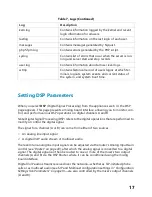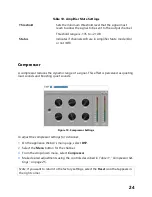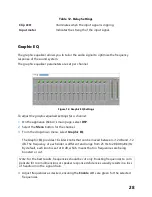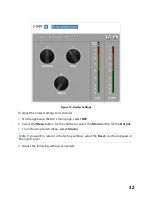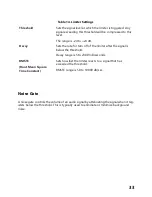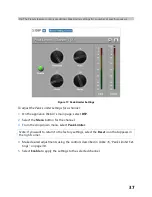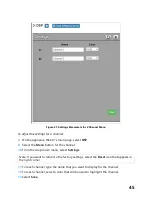
31
Limiter
A limiter is a compressor with a high slope (i.e., attack) that is used to prevent a signal
from exceeding a set decibel level. Limiters are used as safeguards against signal clipping.
Limiter parameters are set per channel.
Low-Pass (High Cut)
This feature helps eliminate high-frequency noise (signals of 8000 Hz and above) such
as background hiss and sibilance (excessive "S" in vocals, etc.) and is used primarily
with microphone-level input. It is particularly effective when handheld microphones
are used.
Frequency
Set the cutoff frequency. You can adjust the frequencies by
moving the knob (click and move up or down) or by dou
-
ble-clicking the knob and typing the frequency. When typ
-
ing the frequency, only numeric values from 20 Hz to
20,000 Hz can be entered.
The low-pass filter attenuates content above this fre
-
quency and lets frequencies below this cutoff frequency
pass through the filter.
Type
Available filter types are:
• Linkwitz-Riley (12, 24, 36, and 48 dB per octave)
• Butterworth (6, 12, 18, 24, 30, 36, 42, and 48 dB per
octave)
• Bessel (12, 18, and 24 dB per octave)
Note:
The term “dB per octave” describes how steeply fre
-
quencies above the selected cutoff frequency are attenu
-
ated. For example, if the cutoff frequency is 8,000 Hz and
the filter type specifies 12 dB per octave, a 16,000-Hz sig
-
nal (i.e., one octave higher) will be attenuated by 12 dB and
a 32,000-Hz signal (i.e., two octaves higher) will be attenu
-
ated by an additional 12 dB.
Table 13. High/Low Pass Parameters (Continued)

